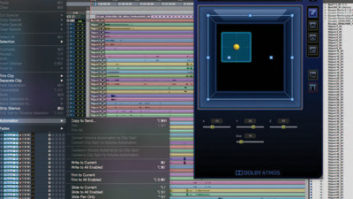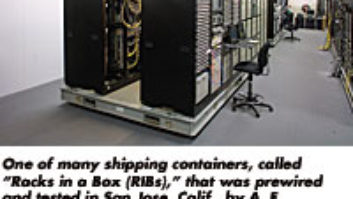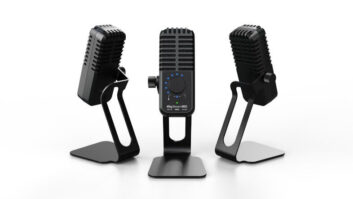Whether you browse the WSJ, Lefsetz, DigitalTrends or Recode, you now understand that music streaming is booming. The RIAA reports that streaming reve- nue generated $2.5 billion in the first six months of 2017. This number is up 48 percent from last year, driven by more than 30 million people paying for a streaming service in the States. Sure, there are exceptions like the new Foo Fighters record Concrete and Gold, which is excellent and debuted at Number One on Billboard’s all-genre Hot 200. From Hugh McIntyre in Forbes: “The record…begins at the peak with 127,000 copies shifted, of which 120,000 were actual sales, showing that the majority of Foo Fighters fans are still interested in owning albums and not just streaming them.” I paid $10.99 at foofighters.com to download three versions at high resolution—okay, they’re calling 44.1kHz/16-bit “high res,” but you have to start somewhere.
Ninety-nine percent of my music listening comes from live recording sessions or my collection of more than 10,000 songs from my CD and vinyl collection uploaded to a hard drive in Apple Lossless format. Though this limits me to what I hear in studio or what I can fit on my Galaxy phone or enjoy from my music server at home, I don’t ever have to listen to an MP3. My problem with low-res streaming, or even listening to dumbed-down online purchases, is the quality—it sucks, and the industry knows it. Tidal offers “Lossless High Fidelity” streaming for $19.99 per month, and paid Spotify subscribers ($9.99 per month) can up their quality to 320 kbps to Extreme for both desktop and mobile apps. And ,just recently, according to theverge.com, Spotify is experimenting with lossless streaming, dubbing it “High-Fi,” at the cost of an extra $10 per month on top of the regular subscription fee. While these efforts indicate that high-def matters are promising, I still can’t get all my choices in the stream; well, I should say, “until now.”
What’s changed my mind and experience with streaming is BRIO by Orastream. I always thought that pipeline issues would keep me from ever having a great audio experience online. That is because, in my area (suburban Nashville), the bandwidth is a joke. On a sleepy Saturday morning as I write this column, with no TVs or other computers running in the house, my up is 2.83 Mbps and down is 22.68 Mbps. It’s not unusual for movies to hiccup in prime time, and my wife, who works from home via VOIP, hears a loss in quality if I’m working on my computer at the same time. But even with these numbers, BRIO works flawlessly at the house.
What is BRIO? It was started by Singapore-based CEO Frankie Tan and his partner, CTO Kelvin Lee, in 2011. The Orastream sys- tem takes files up to 24-bit, 192kHz (WAV, ALAC, AIFF or FLAC) and encodes them as bit-for-bit lossless files in MPEG-4 SLS format. From there, they can be served back into the original formats. When I asked Tan if BRIO would work on my challenged home pipeline, he said, “For full 24/192-bit perfect lossless, the streaming bit rate is up to 6,000 Kbps; For full 24/96 audio, bitrates up to 3,000 Kbps. So, if you have a fairly consistent network at 10-20 Mbps, it should be able to support 24/192 bitrate streams.” The website explains further: “When the network is fast enough, the audio frames are streamed in full, i.e., all data in each audio frame is delivered to achieve full native resolution lossless bit-rates. When the network slows down (congestion, weak reception zones, etc.,), the bitstream is truncated and streaming data scales down from lossless bit-rates to avoid audio buffering, interruptions, etc., for improved QoS.”
All that tech explained it does work very well at delivering what it promises. I have the Cloud plan ($150 per year), meaning my collection resides on Orastream’s server and can be accessed from a browser or mobile app. You can also set up your server from the tutorial on their site, which streams your music for free from a browser; then you can add the mobile plan for $30 per year to take that on the road. All very reasonable.
What I like about this is the pro application. I asked Tan if an engineer, from his server or a secure Cloud account through BRIO, would be able to have the client/artist/producer listen to a mix on their mobile device or computer-streamed at full resolution? He answered: “Yes, that would be one of the use cases for BRIO. In your example, the producer would upload the mixes, then the artist would access the mix(es) by logging in with the producer’s account credentials. This is private sharing and is within BRIO’s terms of use.” Orastream also provides archival storage and collaborative working solutions for studios offering remote access and playback at native resolutions.
In a world where project collaborators are all online with mobile playback in their pocket, why couldn’t streaming be the future of delivery of mixes for approval, or at least for a gut-check appraisal? Whether BRIO is the platform or not, this seems to be an expedient and high-quality way for pros to work in a streaming world. That’s how the consumer will be listening. And if you want to step up your DAC from your computer, try the Emotiva Big Ego or Grace Designs m900 DAC/Headphone amp I’m now reviewing for Mix—they provide an excellent way to improve the playback quality from your computer.





